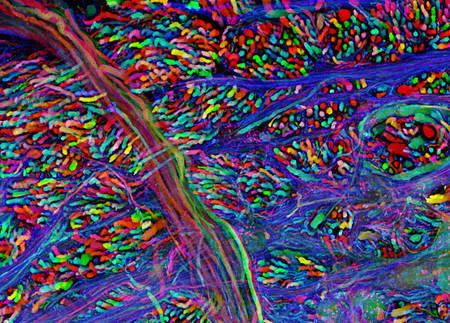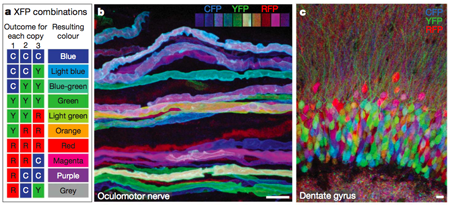
Ref: http://olympusbioscapes.com/gallery/2007/index.html
Much like pixels make many different colors possible on your screen, the different random combinations of green, red, cyan and orange fluorescent proteins make it possible to color individual neurons in nearly 100 different hues. You never know from the beginning which color every individual neuron is going to get, but with a choice of nearly 100 different possibilities chances are you're going to observe every individual neuron glow in a different hue, making it possible to chart complex neuronal pathways.

Ref: J. Livet et. al (see reference below)
The use of fluorescent proteins is an important technique to visualize for instance where different genes are being expressed. The gene that encodes the fluorescent protein, first found in jellyfish, can be introduced next to the gene of interest in the transgenic animal. Then both genes are going to be expressed at the same time and you can get a marker of what organ or what part of the brain your gene of interest is being expressed. It's simply going to glow in the dark.
Livet, J., Weissman, T.A., Kang, H., Draft, R.W., Lu, J., Bennis, R.A., Sanes, J.R., Lichtman, J.W. (2007). Transgenic strategies for combinatorial expression of fluorescent proteins in the nervous system. Nature, 450(7166), 56-62. DOI: 10.1038/nature06293
Swedish blog tags: Vetenskap, Neurovetenskap, Biologi, Hjärnan, Brainbow
Technorati tags: Science, Neuroscience, Biology, Brain, Brainbow
No comments:
Post a Comment
Note: Only a member of this blog may post a comment.